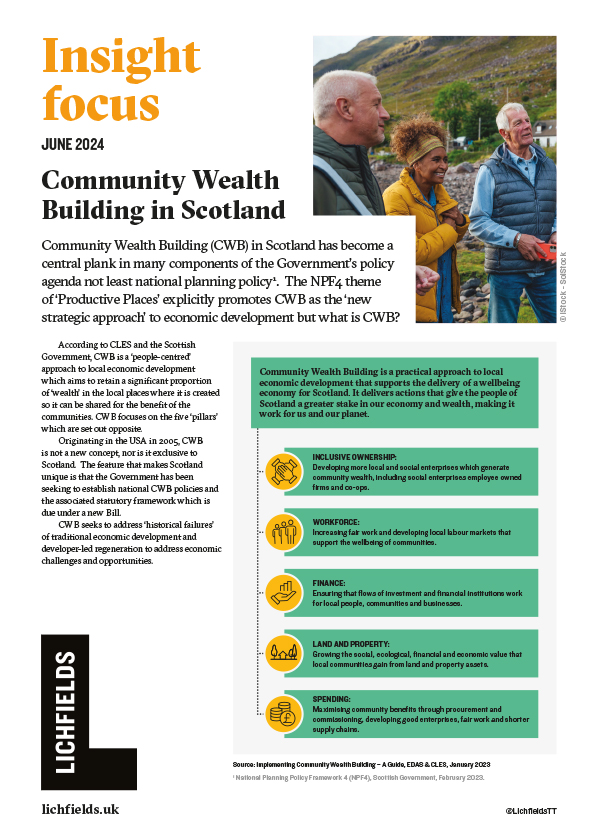Insights
Community Wealth Building in Scotland
Community Wealth Building (CWB) in Scotland has become a central plank in many components of the Government’s policy agenda not least national planning policy1. The NPF4 theme of ‘Productive Places’ explicitly promotes CWB as the ‘new strategic approach’ to economic development but what is CWB?
According to CLES and the Scottish Government, CWB is a ‘people-centred’ approach to local economic development which aims to retain a significant proportion of ‘wealth’ in the local places where it is created so it can be shared for the benefit of the communities. CWB focuses on the five ‘pillars’ which are set out opposite.
Originating in the USA in 2005, CWB is not a new concept, nor is it exclusive to Scotland. The feature that makes Scotland unique is that the Government has been seeking to establish national CWB policies and the associated statutory framework which is due under a new Bill.
CWB seeks to address ‘historical failures’ of traditional economic development and developer-led regeneration to address economic challenges and opportunities.
CWB seeks to capture the economic power of ‘anchor organisations’ which inevitably must hold a crucial presence in a place whether they are major employers, land and asset owners or institutions which play a leading service role for a local community which ties them closely to a place (e.g. NHS Trusts, universities and higher education establishments, trade unions and housing associations).
Whilst there has been much debate and mention of CWB in Scotland, the challenge remains tangible for local authorities and developers alike as how to implement CWB principles in policies, projects and interventions. This challenge is no less acute for the country’s local authority planners who, at a time of significant planning reform, must develop new local development plans which are ‘place-based, peoplecentred and delivery-focussed’ and make planning decisions accordingly.

Download
Read the full document


